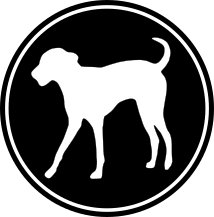Causative Factors of Canine Hip Dysplasia
Owners must separate fact from myth when examining theories on genetic, nutritional and environmental factors that influence CHD.
This is the second part in a series on canine hip dysplasia. What follows is written from the perspective that the readers of the series are conscientious breeders who are the guardians of the genetic pools that constitute their breeds. While this series of articles will not replace a stack of veterinary medical texts, it is a relatively in-depth look at the whole problem of a canine hip dysplasia. Furthermore, the series is designed to be retained as a reference. When you finish reading it you will have a sufficient background to make rational breeding choices and will be able to discuss the subject from an informed basis with your veterinarian. You may not like what you read, but you will be more competent to deal with the problem.
Conclusions from Part I: Genetics is the foremost causative factor of canine hip dysplasia. Without the genes necessary to transmit this degenerative disease, there is no disease. Hip dysplasia is not something a dog gets; it either is dysplastic or it is not. An affected animal can exhibit a wide range of phenotypes, all the way from normal to severely dysplastic and functionally crippled. Hip dysplasia is genetically inherited.
In this article we will address the issue of genetic, nutritional and environmental factors. We hope to debunk some of the myths and introduce some recently developed theories.
Other diseases, infections or trauma can produce clinical signs suggestive of canine hip dysplasia. In some breeds the animals learn to live with pain and are stoic about letting anyone know of their pain. This stoicism seems to be especially prevalent in terriers and northern breeds and is the case – not the exception – in the fighting breeds. Those fanciers who participate in pulling, freighting, carting or sledding events with their dogs should always be aware that tendonitis or pulled muscles can cause a gait change reminiscent of hip dysplasia. Anyone involved in lure chasing or coursing for real needs to understand that on occasion, an animal will twist or turn the wrong way while in full chase. In the older dog, trauma from younger years may manifest itself as arthritic deterioration. A little bit more unusual is to have viral penetration of the joint capsule with resultant damage to articular cartilage, or the epiphyseal surfaces of the femur. Absent such unusual occurrences, the reality of hip dysplasia is that it is a genetically linked condition–always was, always will be.
